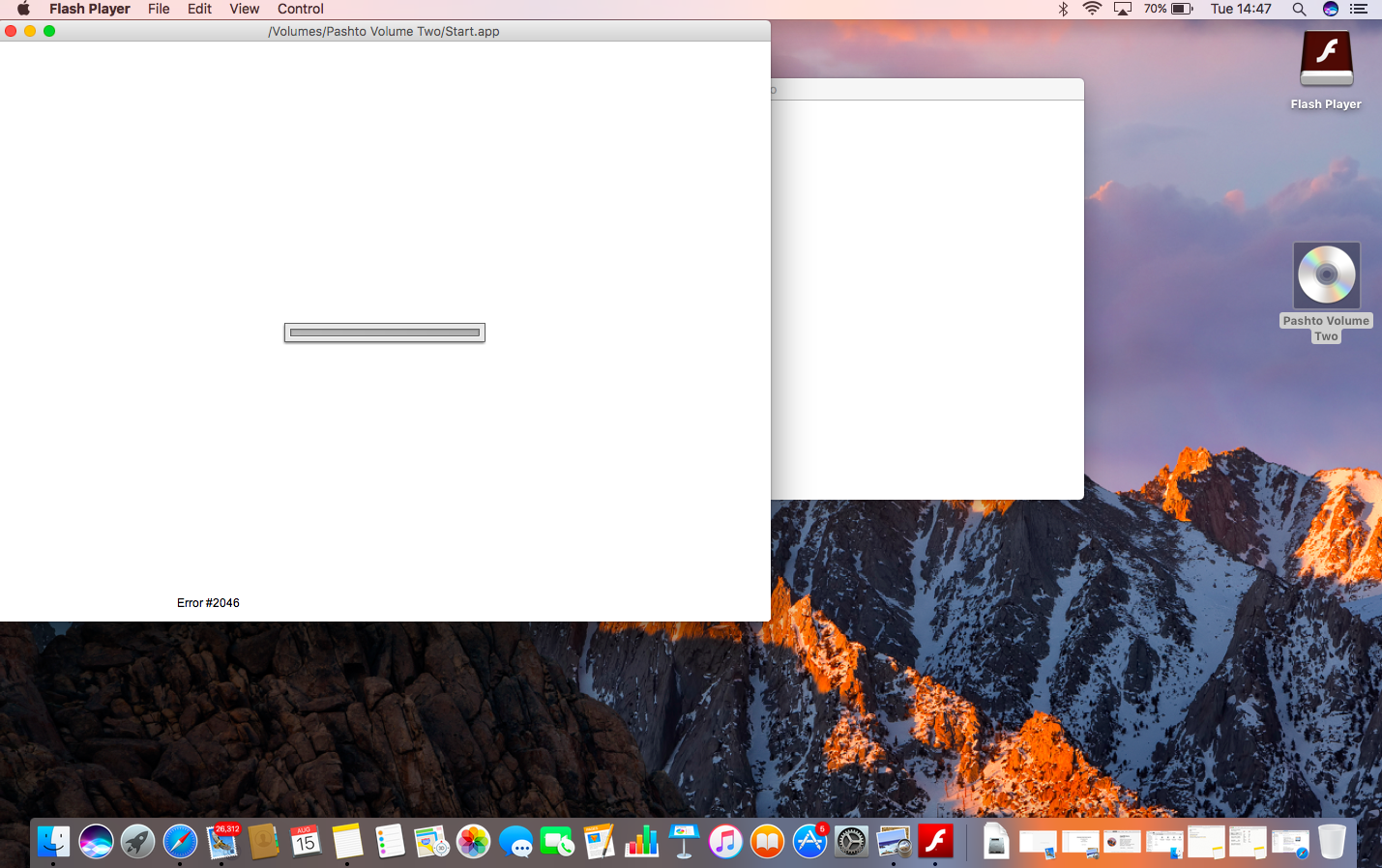 Adobe Community
Adobe Community
- Home
- Flash Player (read-only)
- Discussions
- Error 2046 when playing CD ROM on Mac
- Error 2046 when playing CD ROM on Mac
Error 2046 when playing CD ROM on Mac
Copy link to clipboard
Copied

My operating system is macOS Sierra 10.12.6
Web browser is Safari Version 10.1.2 (12603.3.8)
Flash Player version is OSX-5
I have 3 language CD ROMs. Two of them play fine on my computer but one of them gives the error 2046 message when I try to open it.
This same CD ROM that won't open on my Mac opens on my Mum's Windows PC.
Any help would be much appreciated as I want to be able to use this CD without having to go to my parents house to use it. Apple have referred me to Adobe support as they were unable to find a problem,
thanks,
Dave Wythe
Copy link to clipboard
Copied
Error 2046 means that "The loaded file did not have a valid signature".
The loading bar looks like it came from Adobe Flex (which reached it's end of life around 2011), and since Flex is a large framework, there's a signed, cacheable copy of the library that can persist on your machine to make future load times fast. It's digitally signed, which ensures that it's authentic.
The original digital signatures for Flex expired a couple years ago (May 2015, to be specific), and we published new copies of them. I'm thinking that this is a really old CD-ROM, and it's trying to install a copy of the Flex framework with an invalid digital signature. If the Flex framework was already installed on your mom's computer before the signature expired, it's already installed, so you don't run into this.
If my theory is right, there are a couple ways that I can think of to work around it:
- The optimal solution would be to get an updated copy of the software from the vendor.
- You might be able to roll the date back on your computer to before May 2015, when the certificate was valid.
This is probably the easiest solution. - You could identify the specific version of the Flex Framework used (searching the disc for files that end in .swz will probably yield the answer), and then we'd have to figure out how to get a current copy to install on your machine. You could use Flex Builder to build a sample application using that specific version of the Flex SDK and run it locally, at which point the framework would get cached on your machine.
Alternatively, you could identify an application on the web that's running and using that version of the SDK, but there's not necessarily an easy way to do that. This sounds fairly painful unless you're a software engineer, so hopefully just rolling the clock back works.
Anyway, the moral of the story here is that the software is too old to be trusted as authentic. This would typically not be a big deal. Flex was intended for developing content on the web, and as long as the author had included links to the Flex framework on Adobe's servers, you would have just transparently been pointed to the latest copies of the framework files, which have valid signatures.
Since the actual bits for the framework available at the time were burned on to the CD-ROM and the author points to them directly, instead of the bits on Adobe's servers, there's no way for the software to grab a current copy for you.